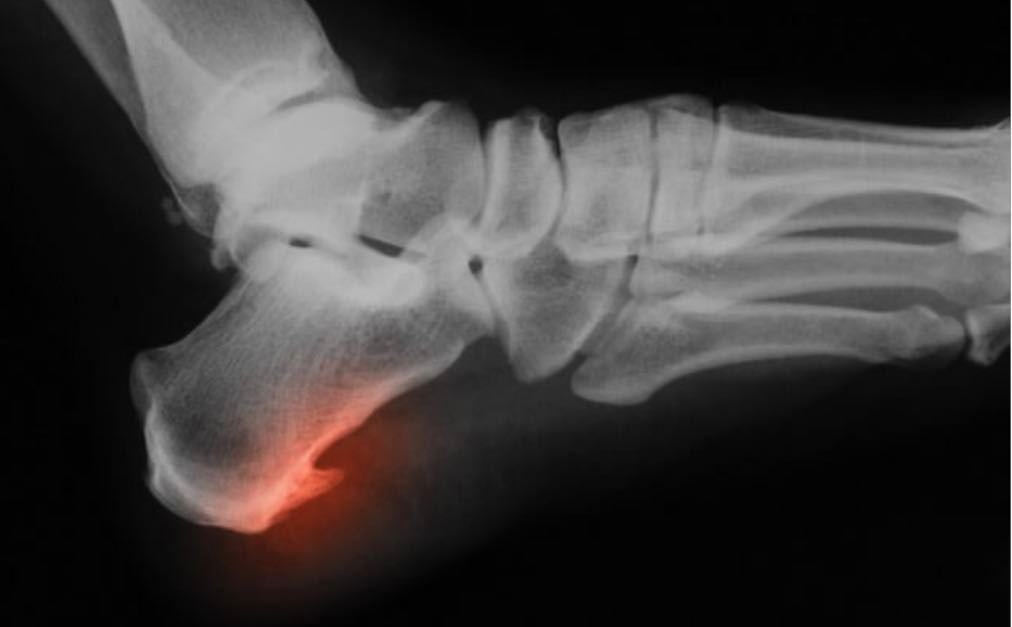
BONE SPURS FROM PLANTAR FASCIITIS
Often presenting as calcaneal spurs, bone spurs occur when there has been repeated trauma in the foot. They are the result of micro-tears in the connective tissue attaching to the heel, which can further develop into boney outgrowths. This commonly occurs at the heel where the plantar fascia inserts onto the bone. While most people complain of pain and discomfort, there have been cases with no symptoms at all.
Bone spurs are commonly the result of flat feet (pes planus), but are also affected by heredity, metabolic disorders, increased inflammation in the body, and other diseases. Risk factors: Those who have repeated trauma around the foot, inflammation in the peroneal muscles, deformities in the ankle area, severe disease (inflammation on the calcaneal due to overworking). Diagnosis: A physical therapist would be able to determine the likelihood of a bone spur based on a clinical examination. X-rays and MRIs would confirm the presence of bone spurs. There are tiers 1-3 of how severe the bony outgrowth can be.
Tier 1 would take up to 6 weeks for healing, tier 2 would take 6 months and tier 3 would take 6 months also but would require a different type of treatment. Treatments Bony spurs can be treated with traditional physiotherapy by increasing the strength around the surrounding muscles and lengthening those muscles as well. However, sometimes radiation, shockwave, laser, and cortisone shots are needed. Other therapies such as hot and cold can also treat the area. Wearing foot splints during sleep can also help prevent the bony spurs from getting worse, and shoe inserts or foot orthotics may also be beneficial. A physical therapist can help you determine the optimal treatment for your specific body’s alignment, functional status, and body tissues.
